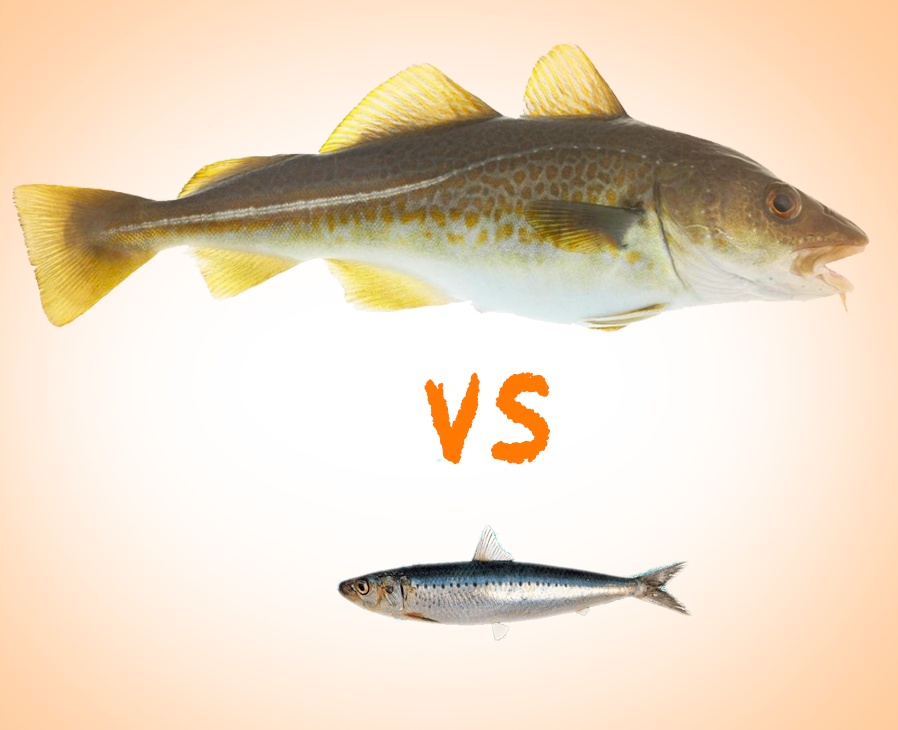Cod liver oil made from 100% Arctic cod livers is an excellent source of omega-3 essential fatty acids (EPA+DHA). This oil has a long history of use and great cultural importance for the people of Scotland, Ireland, northern Europe, Iceland, and Newfoundland, where it is consumed to treat rickets, rheumatism, and a variety of ailments. Fortunately for us, today’s processing technologies have reached a level of sophistication that allows for greater purity, freshness, and taste than ever before!
What’s the difference between fish oil and cod liver oil?
Cod liver oil is extracted from cod livers, whereas fish oil is extracted from the body flesh of fish. These two types of oil are both excellent sources of the omega-3s, EPA and DHA, but in different ratios: Arctic cod liver oil has about 9% EPA and 14% DHA, whereas fish body oil provides about 18% EPA and 12% DHA.
Another difference is that cod liver oil contains small amounts of naturally occurring vitamins A and D. For example, the natural vitamin A found in Nordic Naturals Arctic Cod Liver Oil averages 650–1500 I.U.s (217 – 500 mcg)* per serving. The recommended daily allowance (RDA) of vitamin A for adults (as established by the U.S. Institute of Medicine of the National Academy of Science) is 3000 I.U.s (1000 mcg) for men and 2300 I.U.s (767 mcg) for women. Cod liver oil also provides a small amount of natural vitamin D3, but not enough to meet the new recommendations. For people who want more vitamin D3, Nordic Naturals Arctic-D Cod Liver Oil is a great choice. It provides 1000 I.U.s (333 mcg) of vitamin D3 per serving, which meets the recommended intake for children and adults who do not receive adequate sun exposure.
According to Dr. Brad West, Nordic Naturals Research Advisor, “This question of cod liver oil versus fish body oil seems to be one of preference. I have found people in climates with less sun often prefer cod liver oil due to the presence of vitamins D and A. Cod liver oil is a great everyday remedy for folks of all ages, but especially for kids—whether in chewable soft gels or liquid added to their food. When it comes to condition-specific issues, it’s best to rely on your practitioner’s recommendations.”
So what’s the catch?
Not all cod liver oil is made from cod livers! Many brands use fish such as pollock and haddock as a less expensive source of oil. This is allowed because the international production of cod liver oil is regulated by only one rule—the final product must match the specific EPA ratio (EPA to DHA) found in cod liver oil. Furthermore, the majority of cod liver oil products on the market are supplemented with synthetic or natural vitamin A, which is why many have high levels of vitamin A.
Buyer beware! Read the labels and know what you are purchasing! There is a wide range of quality when it comes to cod liver oils.
Have questions about your intake of vitamin A? We suggest consulting your health practitioner for appropriate cod liver oil dosing. According to Dr. Brad, “Vitamin A toxicity is greatly misunderstood. While some forms of synthetic vitamin A may be toxic at moderate doses, natural, fat-soluble vitamin A, found in foods like cod liver oil, is safe at much higher amounts.”
Key Points To Remember With Cod Liver Oil:
- Available in liquid or soft gels in 3 naturals flavours (Lemon, Strawberry or Orange) as well as unflavoured.
- Made exclusively from 100% Arctic Cod (Skrei) – no fish body oil or synthetic additives are ever used!
- One way to ensure that you are getting the naturally occurring Vitamin A and D that is found in the genuine products is by checking the label. If there is an exact figure for the amount of Vitamin A and D then you know the vitamins have been added. If there is a figure that is within a range, then this will be the naturally occurring vitamins and no nasties added. Just like everything in nature, there will be fluctuations in the amount of vitamins and minerals present and cod liver oil is no exception.
- The nose knows! If your cod liver oil smells strongly of fish or just plain nasty then don’t take it! Of course as it is oil it will have an oily texture, however the oil itself will be a light and pleasant taste (for even the toughest skeptic!)
*Micrograms (mcg) represent the Retinol Activity Equivalent amount of Vitamin A.







Leave a Reply
Want to join the discussion?Feel free to contribute!